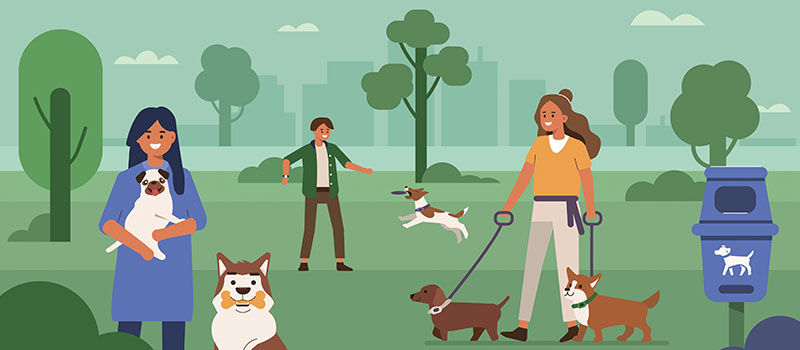What’s the Buzz
The Bee Healthy Blog
Gabapentin for Dogs and Cats: Uses, Benefits, Side Effects

Gabapentin (brand name: Neurontin) is an anticonvulsant and analgesic drug. It is commonly prescribed to treat seizures. This medicine is also used to treat chronic pain, specifically neuropathic pain or nerve pain. Gabapentin works by decreasing abnormal signals in the brain and changing how the body perceives pain. Human gabapentin is also used for seizure control and pain management in pets. Please continue reading to learn about the uses, benefits, and side effects of gabapentin in dogs and cats.
Is gabapentin used in veterinary medicine?
Gabapentin is used in veterinary medicine for treating neuropathic pain in dogs, cats, and other animals. It is also used to treat seizures alone or as adjunctive therapy with other anti-seizure drugs.
Gabapentin works by increasing the activity of an inhibitory neurotransmitter called GABA in the brain. Taking gabapentin therefore reduces abnormal activity in the brain caused by excitatory neurotransmitters.
Is there a difference between human gabapentin and dog gabapentin?
The human medicine gabapentin is used off-label in dogs to control seizures and treat pain. It is also used to treat anxiety in dogs. Off-label use means dog-specific research on gabapentin has not been done. This medication is not FDA-approved for use in animals. However, human gabapentin appears to be safe and effective in dogs, cats, and other animals.
Human dosage forms of gabapentin include 100 mg, 300 mg, and 400 mg capsules, 600 mg and 800 mg tablets, and an oral solution. Liquid formulations are useful if you have trouble getting your dog or cat to swallow pills. However, keep in mind that the oral solution meant for humans may contain an artificial sweetener called xylitol which is toxic for dogs. A pharmacy can compound liquid gabapentin for dogs that does not contain xylitol. In addition, a special compounding pharmacy may need to prepare the appropriate doses of oral gabapentin for smaller animals.
Can gabapentin be used to treat seizures in pets?
Gabapentin is commonly prescribed to pets for treating seizures caused by refractory idiopathic epilepsy (a type of epilepsy that is not controlled by other medications). Taking oral gabapentin can reduce seizure frequency (the number of seizures per week) in dogs by half. However, long-term treatment with gabapentin may be necessary, which can have cost implications. Moreover, studies have shown that stopping gabapentin can lead to withdrawal seizures or recurrence of seizures.
Can gabapentin be used to treat chronic pain in dogs and cats?
Gabapentin is used as a pain reliever in dogs, cats, and other animals. It can provide chronic pain relief by managing neuropathic pain, chronic arthritic pain, cancer pain, and other types of pain. Gabapentin is often prescribed along with another pain medication, for example, nonsteroidal anti-inflammatory drugs (NSAIDs) like ibuprofen or naproxen. Pain management with a combination of gabapentin and NSAIDs can enhance the effects of the latter and may lead to a dose reduction of NSAIDs in veterinary patients with chronic pain.
How much gabapentin can a dog take?
The dose of gabapentin in dogs, cats, or other animals varies greatly. It depends on whether gabapentin is being used to control pain or treat seizures. The dose also varies according to the animal’s body weight.
A veterinarian may give a low starting dose and gradually increase the dose. Dose adjustment may be needed when giving future doses if gabapentin is used for the long term. This is because animals can develop a tolerance to the medicine.
How long does 100 mg of gabapentin last in dogs?
Gabapentin is a short-acting drug. Its effects typically last for 24 hours. Your vet may ask you to give gabapentin to your dog every 8-12 hours (2-3 times a day).
What should I know before giving gabapentin to my dog?
Your vet will give you detailed instructions on how to give gabapentin to your pet, but here are some general guidelines:
- You can give your pet gabapentin on an empty stomach or with food.
- In case you miss a dose of gabapentin, give it as soon as you remember. However, if it is almost time for the next dose, skip the missed dose and give the next dose as scheduled. Do not double up on the dose to make up for a missed dose.
- Gabapentin may not be right for all animals. Tell the vet if your pet has a history of kidney or liver disease. Talk to your vet about the benefits versus risks of gabapentin for dogs and cats if your pet has liver disease or kidney problems. Extreme caution should be exercised in giving gabapentin to animals with reduced renal function.
- Keep all veterinary visits during treatment with gabapentin. Your vet may need to change the dose based on clinical signs and response.
- Do not abruptly discontinue gabapentin. This can lead to withdrawal seizures. Your vet will tell you how to gradually lower the dose.
- Give your vet a complete list of your pet’s medications, including prescription drugs, over-the-counter medications, other analgesic agents, supplements, and herbal therapies to avoid drug interactions. Check with your vet before starting your dog or cat on any additional medications.
- Gabapentin may not be safe for animals that are pregnant or lactating.
- You should give your pet oral antacids at least 2 hours away from gabapentin. Antacids can hinder the absorption of gabapentin and make it less effective.
- Know that taking gabapentin can lead to a false positive reading on urinary protein tests.
What are the side effects of gabapentin in dogs?
Gabapentin is generally well tolerated. The most common side effects of gabapentin in dogs are mild sedation, occasional diarrhea, and poor coordination and balance. Rarely, gabapentin can cause more serious adverse effects, such as an allergic reaction. Call the vet or take your dog to the emergency room if there is an adverse reaction with hives, itching, swelling, or difficulty breathing.
How does gabapentin make a dog feel?
Gabapentin can make a dog feel better by providing pain relief or reducing the frequency of seizures. This medicine may also have a calming effect in dogs with anxiety.
References:
- https://medlineplus.gov/druginfo/meds/a694007.html
- https://www.akc.org/expert-advice/health/gabapentin-for-dogs/
- https://www.dvm360.com/view/use-gabapentin-help-manage-anxiety-dogs
- https://pubmed.ncbi.nlm.nih.gov/17189599/#
- https://www.ncbi.nlm.nih.gov/pmc/articles/PMC4672179/
- https://avriorx.com/gabapentin-for-pain-in-dogs-and-cats/#
- https://www.marvistavet.com/sites/site-5348/documents/Gabapentin.pdf
- https://vcahospitals.com/know-your-pet/gabapentin#












SOCIAL